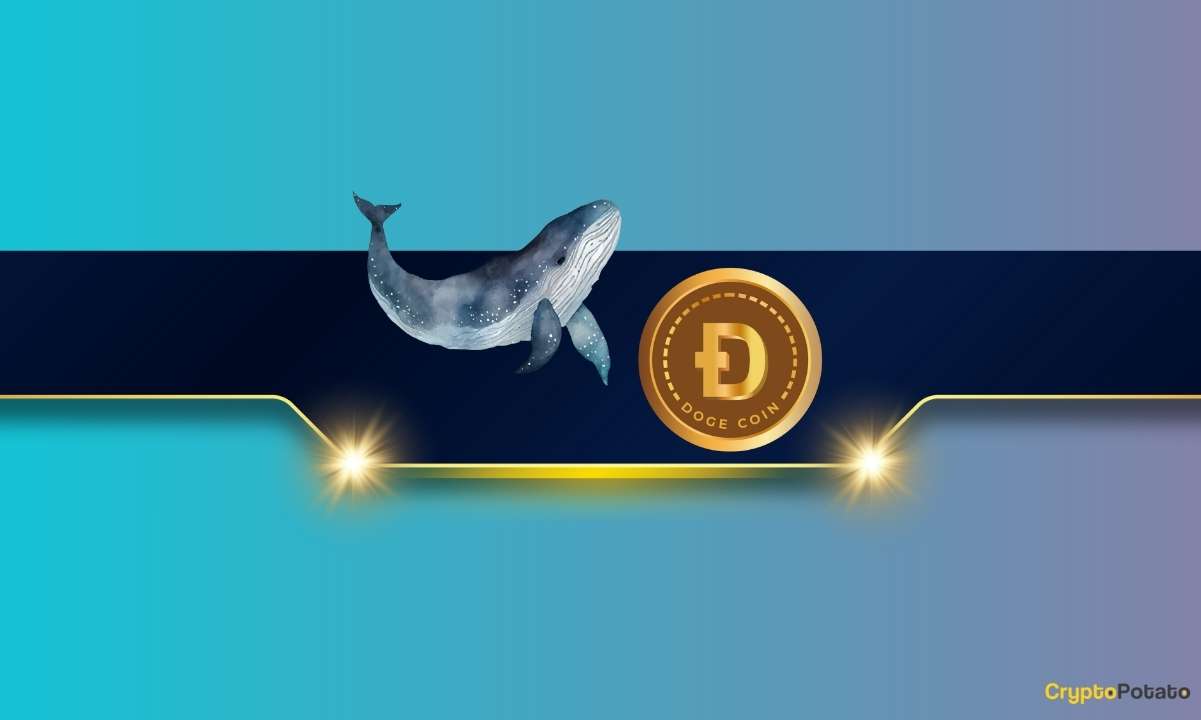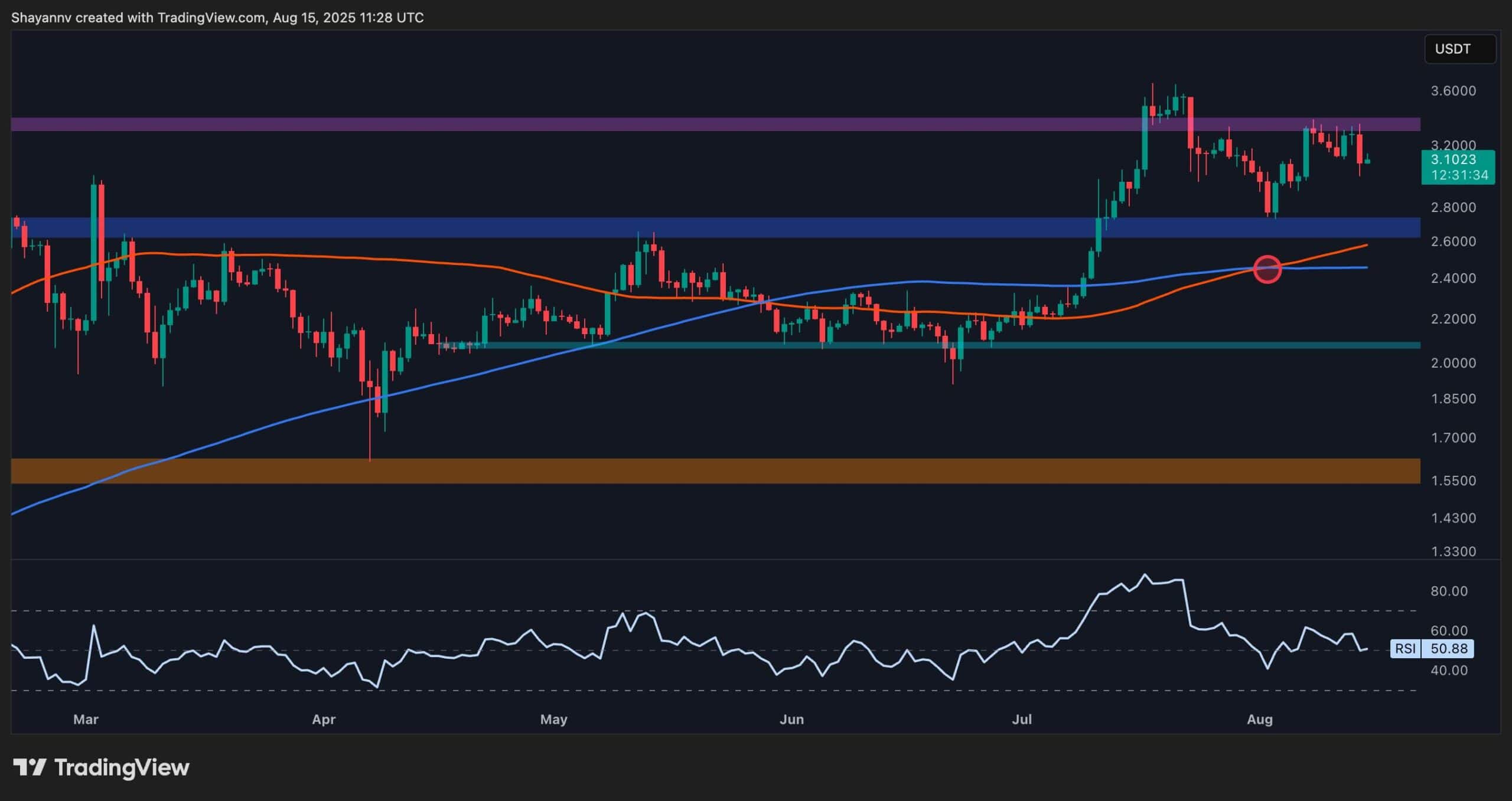Cryptocurrency
Need for Speed – Only Ultra-Fast Blockchains Will Win the Adoption Race (Opinion)

Speed isn’t just a challenge for blockchain – it’s the deciding factor between adoption and obsolescence. If Web3 can’t match the seamless experience users expect, it won’t matter how decentralized or innovative it is.
The current state of development speaks volumes: according to a16z’s Builder Energy Dashboard, which tracks where crypto’s builders are focusing their efforts, infrastructure development accounts for around one-fifth of activity, with Layer 1 and Layer 2 projects making up over a third of that segment. Given that most of these projects are focused on delivering high transaction speeds without corresponding high fees, it’s clear that scalability and processing times remain a major constraint on the industry.
However, blockchain scalability must not become the only lens through which we evaluate transaction speeds. Achieving the highest transactions per second isn’t an end in itself – it’s a means to a better user experience. In the areas where Web3 is gaining the most traction – namely trading and gaming – fast settlement isn’t a luxury; it’s a requirement for competing with Web2 incumbents.
Trading Up to DeFi
Demand for on-chain trading is surging. According to a16z’s annual State of Crypto report, decentralized exchanges (DEXs) now handle 10% of total spot crypto trading – a dramatic shift from just four years ago when centralized exchanges (CEXs) dominated 100% of the market.
Meanwhile, total value locked (TVL) in DeFi has climbed back above $100 billion for the first time since 2021, and analysts project continued expansion, with DeFi expected to grow at a 45% CAGR through 2032. The market is increasingly recognizing the advantages of on-chain, transparent, peer-to-peer trading over the black-box opacity of centralized systems.
But Web3 isn’t competing in a vacuum – legacy finance isn’t standing still. If on-chain trading platforms want to pull users away from TradFi, they need to offer speed, seamless UX, and reliability on par with platforms like Robinhood or Fidelity. The reality is that blockchain will never match TradFi’s centralized servers in raw speed – physics, latency, and decentralization make that impossible. But that’s not where Web3 wins. Its edge isn’t measured in milliseconds; it’s measured in trustlessness, finality, and programmable finance—things legacy systems simply can’t offer.
The real battle isn’t just about execution speed; it’s about how much trust, efficiency, and flexibility Web3 can inject into the financial stack. On-chain trading isn’t about making TradFi obsolete—it’s about building a financial system where finality is instant, markets are open, and speed serves trust, not intermediaries.
Game Studios Building It for Themselves
While gaming has seen flashes of mainstream interest, from Axie Infinity’s early surge to NBA Top Shot’s collectibles boom, long-term adoption remains elusive. This year, Ton has emerged as a hub for blockchain-based gaming, with viral hits like Hamster Kombat, Notion, and Catizen. These trends suggest that blockchain can add new layers of ownership and economic incentives to gaming – but viral success doesn’t equal sustainability.
The real opportunity lies in instant asset settlement, true player ownership, and permissionless economies, but only if blockchain tech can operate at speeds indistinguishable from traditional game servers. If transaction delays or high fees create friction, Web3 gaming risks being a novelty rather than a revolution – a niche experiment instead of a fundamental shift in the industry.
Unlike DeFi and on-chain trading, which have seen institutional backing, blockchain gaming is still in its experimental phase. Developers face a different set of challenges: while traders may tolerate some transaction costs, gamers won’t. If fees and latency interrupt gameplay, blockchain titles simply can’t compete with the seamless experience of traditional games. That’s why some studios, frustrated with existing infrastructure, have built their own chains – like Sky Mavis with Ronin or Dapper Labs with Flow.
This signals an unmet need: Web3 gaming requires infrastructure tailored for high-speed, low-cost transactions at scale. Instead of forcing developers to solve these problems themselves, the industry must deliver blockchains that are as invisible as they are powerful. After all, game creators should be focused on building immersive experiences, not architecting new networks from scratch.
The Need for High-Speed Blockchains
If blockchain is ever to deliver on high-demand use cases such as on-chain trading and gaming, the industry needs truly scalable, high-speed networks capable of matching Web2’s seamless experience. Solana’s rapid rise illustrates the demand for fast, cheap block space, but its struggles with uptime highlight the challenge of delivering scalable speed without compromise. Even Ethereum’s Layer 2 solutions, while improving speed and cost efficiency, introduce their own set of challenges – chief among them interoperability and fragmentation.
The direction of travel is right, but the clock is ticking. Blockchain infrastructure must evolve fast enough to deliver on Web3’s promises before Web2 incumbents absorb its best ideas. Speed is critical, but speed alone isn’t enough. The real goal isn’t just to match Web2’s performance – it’s to build a trustless, open, and composable foundation that Web2 can’t replicate.
Author bio
Tristan Dickinson is the Chief Marketing Officer at exSat Network, a docking layer for Bitcoin. A dynamic and visionary marketing executive, Tristan brings a wealth of experience from the banking, financial services, Web3, and technology sectors.
Binance Free $600 (CryptoPotato Exclusive): Use this link to register a new account and receive $600 exclusive welcome offer on Binance (full details).
LIMITED OFFER for CryptoPotato readers at Bybit: Use this link to register and open a $500 FREE position on any coin!
Cryptocurrency
Ethereum Foundation, Whales, and Hackers: What’s Driving the ETH Sell-Off?

TL;DR
- Whales, hackers, and the Ethereum Foundation wallets moved over $500M in ETH through large sales and withdrawals.
- Ethereum transfers rose to 4.6M ETH, nearing the monthly high of 5.2M recorded in July.
- Staking inflows hit 247,900 ETH, the highest in a month, locking more supply from trading.
Large Withdrawals and Whale Activity
Ethereum (ETH) has seen heavy movement from major wallets over the past few days. On-chain data from Lookonchain shows a newly created wallet pulled 17,591 ETH, worth $81.62 million, from Kraken in just two hours.
Over three days, two new wallets withdrew a combined 71,025 ETH, valued at $330 million, from the exchange.
One of these wallets, address 0x2A92, has withdrawn 53,434 ETH, worth $242.34 million, in two days. This includes a recent purchase of 30,069 ETH, valued at $138.46 million, during a market drop.
Major ETH Holders Offload Millions Amid Price Rally
In contrast, several separate entities have been disposing of some ETH holdings. A wallet tied to a hacker address 0x17E0 sold 4,958 ETH for $22.13 million at $4,463, securing a profit of $9.75 million. Earlier this year, the same address sold 12,282 ETH at $1,932 and later bought back part of the amount at higher prices.
A different whale sold 20,600 ETH for $96.55 million over the past two days, generating a profit of more than $26 million after holding the position for nine months.
Meanwhile, an Ethereum Foundation-linked wallet, 0xF39d, sold 6,194 ETH worth $28.36 million in the last three days at an average price of $4,578.
Recent sales from the same wallet included an additional 1,100 ETH and 1,695 ETH for over $12.7 million combined.
The #EthereumFoundation-linked wallet(0xF39d) sold another 1,300 $ETH($5.87M) at $4,518 ~11 hours ago.
Over the past 3 days, this wallet has sold a total of 6,194 $ETH($28.36M) at an average price of $4,578.https://t.co/4hfCWymHVG pic.twitter.com/ErUyEY8SJy
— Lookonchain (@lookonchain) August 15, 2025
Network Activity on the Rise
CryptoQuant data shows Ethereum’s total tokens transferred have been climbing since August 9. After ranging between 1 million and 3 million ETH through late July and early August, transfers have risen to 4.6 million ETH, approaching the monthly high of 5.2 million recorded in mid-July. This increase has occurred alongside a price rally from about $3,400 to $4,600.
Interestingly, staking inflows generally stayed between 20,000 and 80,000 ETH per day over the past month. On August 14, inflows jumped to 247,900 ETH, the highest in the period.
At the time, ETH was trading near $4,600. Large staking deposits reduce the amount of ETH available for immediate trading, as staked coins are locked for a set period.
In the meantime, ETH trades at $4,647 with a 24-hour volume of $68.25 billion, down 2% on the day but up 19% over the week.
Binance Free $600 (CryptoPotato Exclusive): Use this link to register a new account and receive $600 exclusive welcome offer on Binance (full details).
LIMITED OFFER for CryptoPotato readers at Bybit: Use this link to register and open a $500 FREE position on any coin!
Cryptocurrency
Massive DOGE Whale Activity Hints at $1 Breakout

TL;DR
- Whales bought two billion DOGE this week, lifting their combined holdings to 27.6 billion coins.
- A single 900M DOGE transfer worth $208M to Binance drew attention to large exchange movements.
- DOGE broke key resistance, with momentum building for a possible push toward the $1 price mark.
Price and Market Moves
Dogecoin (DOGE) traded at $0.23 at press time, slipping 4% over the past day but still showing a 2% gain for the week. Daily turnover came in at about $6.18 billion.
Meanwhile, the broader crypto market saw over $1 billion in liquidations. Hotter-than-expected US Producer Price Index data pushed traders to scale back expectations of a near-term Federal Reserve rate cut. DOGE had roughly 290,500 coins liquidated during the sell-off.
On the two-week chart, analyst Trader Tardigrade notes that DOGE has cleared a downward-sloping resistance line after completing what appears to be a “wave V” in an Elliott Wave sequence. Similar setups in the past, where prolonged declines stayed within falling channels before breaking higher, have been followed by sharp rallies.
$Doge/2-week#Dogecoin is gaining strong momentum to surge above $1 pic.twitter.com/TuSEKr19nv
— Trader Tardigrade (@TATrader_Alan) August 15, 2025
Momentum gauges are also turning up. The Stochastic RSI, which had dropped into oversold territory, is now heading higher. Previous reversals from this zone have coincided with sustained upward moves. The current formation points to a possible run that could carry DOGE past the $1 mark.
Heavy Whale Buying and Large Transfers
As reported by CryptoPotato, blockchain data shows large investors have added two billion DOGE in the past week, spending just under $500 million. That brings their holdings to about 27.6 billion coins, or 18% of the supply. The buying streak has prompted speculation within the community.
Recently, Whale Alert flagged a 900 million DOGE transfer worth about $208 million into Binance. The tracking indicates that it originated from a wallet connected to the exchange, likely as an internal activity. The address involved holds 2.88 billion DOGE, one of the largest balances on the network.
Ali Martinez also reports that transactions above $1 million reached a one-month high, with activity building since early August and peaking as DOGE traded at $0.25.
Whales are back! Dogecoin $DOGE activity at a 1-month high. pic.twitter.com/C83Pv68mCt
— Ali (@ali_charts) August 14, 2025
Sentiment Building
Analyst Gordon described the current setup as “a nice bit of consolidation” before a potential breakout, adding,
“This will be one of the first coins normies FLOCK to & the pump will be MASSIVE.”
With whale accumulation rising, high-value transfers increasing, and a bullish technical pattern in play, DOGE is positioned for a potential push toward $1 if momentum holds.
Binance Free $600 (CryptoPotato Exclusive): Use this link to register a new account and receive $600 exclusive welcome offer on Binance (full details).
LIMITED OFFER for CryptoPotato readers at Bybit: Use this link to register and open a $500 FREE position on any coin!
Cryptocurrency
Ripple Price Analysis: XRP at Risk as Key Support Levels Could Trigger Sharp Drop

XRP has recently entered a consolidation phase after a strong rally earlier this summer, with the price action now hovering around key resistance levels on both its USDT and BTC pairs. Yet, while momentum has slowed, the charts still indicate a generally bullish structure, with multiple key support levels remaining firmly in place.
Technical Analysis
By ShayanMarkets
The USDT Pair
On the XRP/USDT daily chart, the price is currently trading near the $3.10 mark, facing a strong resistance zone around $3.40. This follows a breakout above the $2.70 range in July, which has now flipped into a support area.
Both the 100-day and 200-day moving averages are also trending upward and recently formed a bullish crossover around $2.45, reinforcing the medium-term bullish sentiment. If the $3.40 resistance breaks, a push toward the critical $4.00 range becomes likely.
However, the RSI hovering near the neutral 50 level suggests a lack of strong momentum for now, meaning a short-term pullback into the $2.80 support zone is still possible.
This zone will be key for maintaining the bullish structure. Losing it could open the door for a deeper correction toward the 200-day moving average located around the $2.40 mark. Yet, as long as the price stays above the moving averages, the broader trend remains bullish.
The BTC Pair
Looking at the XRP/BTC chart, the pair has recently pulled back after hitting the 3,000 SAT resistance, with the price currently around 2,600 SAT.
This follows a clean breakout above the long-term descending channel and a successful retest of its upper boundary, which coincided with the 200-day moving average and the 2,400 SAT support zone. This confluence remains a key bullish technical factor, as holding above it could attract renewed buying pressure.
That said, RSI levels around 48 show that momentum has cooled after the sharp July rally, meaning XRP may continue ranging between 2,400 SAT and 3,000 SAT in the near term. A decisive close above 3,000 SAT would likely open the path to the 3,400 SAT zone, while losing 2,400 SAT could shift the bias back toward 2,000 SAT support. For now, the structure still favors the bulls as long as higher lows remain intact.
Binance Free $600 (CryptoPotato Exclusive): Use this link to register a new account and receive $600 exclusive welcome offer on Binance (full details).
LIMITED OFFER for CryptoPotato readers at Bybit: Use this link to register and open a $500 FREE position on any coin!
Disclaimer: Information found on CryptoPotato is those of writers quoted. It does not represent the opinions of CryptoPotato on whether to buy, sell, or hold any investments. You are advised to conduct your own research before making any investment decisions. Use provided information at your own risk. See Disclaimer for more information.
Cryptocurrency charts by TradingView.

 Forex3 years ago
Forex3 years agoForex Today: the dollar is gaining strength amid gloomy sentiment at the start of the Fed’s week

 Forex3 years ago
Forex3 years agoUnbiased review of Pocket Option broker

 Forex3 years ago
Forex3 years agoDollar to pound sterling exchange rate today: Pound plummeted to its lowest since 1985

 Forex3 years ago
Forex3 years agoHow is the Australian dollar doing today?

 Cryptocurrency3 years ago
Cryptocurrency3 years agoWhat happened in the crypto market – current events today

 World3 years ago
World3 years agoWhy are modern video games an art form?

 Commodities3 years ago
Commodities3 years agoCopper continues to fall in price on expectations of lower demand in China

 Economy3 years ago
Economy3 years agoCrude oil tankers double in price due to EU anti-Russian sanctions

























